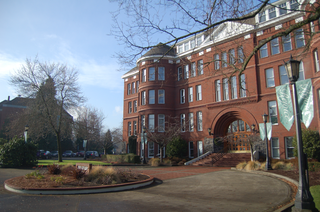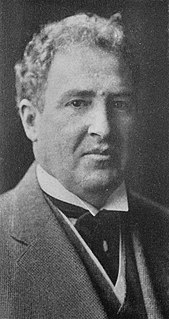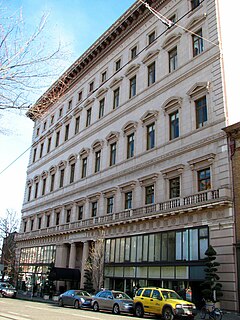
Munson Valley Historic District is the headquarters and main support area for Crater Lake National Park in southern Oregon. The National Park Service chose Munson Valley for the park headquarters because of its central location within the park. Because of the unique rustic architecture of the Munson Valley buildings and the surrounding park landscape, the area was listed as a historic district on the National Register of Historic Places (NRHP) in 1988. The district has eighteen contributing buildings, including the Crater Lake Superintendent's Residence which is a U.S. National Historic Landmark and separately listed on the NRHP. The district's NRHP listing was decreased in area in 1997.

Willamette Mission State Park is a state park in the U.S. state of Oregon, located about four miles (6 km) north of Keizer adjacent to the Wheatland Ferry and east of the Willamette River. It includes Willamette Station Site, Methodist Mission in Oregon, which is listed by the National Register of Historic Places.

The Moose Entrance Kiosk was built between 1934 and 1939 by either the Public Works Administration or the Civilian Conservation Corps at the entrance to Grand Teton National Park. The log kiosk was built to National Park Service standard plans in the National Park Service Rustic style. It was originally located near the park's former administrative area, but was moved in the early 1960s to the new administration center and entrance at Moose. It is the last survivor of that building type and era in the park.

Waldschmidt Hall is an academic building at the University of Portland in Portland, Oregon, United States. Constructed in 1891 as West Hall, the building was originally part of the now defunct Portland University located in North Portland overlooking the Willamette River. The Romanesque style structure built of brick and stone stands five stories tall. The hall was added to the National Register of Historic Places in 1977 and renovated in 1992, the same year it took the current name. Waldschmidt, the oldest building on campus, now houses the school's administration offices and some classrooms.

William Christmas Knighton was an American architect best known for his work in Oregon. Knighton designed the Governor Hotel in Portland, Johnson Hall at the University of Oregon, and the Oregon Supreme Court Building and Deepwood Estate in Salem. He served as Oregon's first State Architect from 1911–1915, appointed by Governor Oswald West. By 1915, Knighton had designed ninety building projects as State Architect. In 1919, Knighton was appointed by Governor Ben Olcott as the first President of the Oregon State Board of Architectural Examiners, a position he held until 1922. In 1920, Knighton was elected the sixth President of the Oregon Chapter of the American Institute of Architects. He remained on the Chapter's Board of the Trustees for several years and was Chair of the Chapter Legislative Committee into the 1930s.

John Virginius Bennes was an American architect who designed numerous buildings throughout the state of Oregon, particularly in Baker City and Portland. In Baker City he did an extensive redesign of the Geiser Grand Hotel, designed several homes, and a now-demolished Elks building. He moved to Portland in 1907 and continued practicing there until 1942.

The Admiral Apartments, originally the Wheeldon Apartments and also known as the Admiral Hotel Apartments, is a five-story brick Tudor Revival apartment building in downtown Portland, Oregon, United States, that was built in 1909. It has been on the National Register of Historic Places since 1990.

The Elks Temple, also known as the Princeton Building and as the west wing of the Sentinel Hotel, is a former Elks building and historic hotel building in downtown Portland, Oregon, United States. Built in 1923, it is one of two NRHP-listed buildings that make up the Sentinel Hotel, the other being the 1909-built Seward Hotel. The Seward was renamed the Governor Hotel in 1932, and in 1992 it was joined with the former Elks building, and thereafter the building became the west wing of a two-building hotel, an expanded Governor Hotel. The hotel's main entrance was moved to this building from the east building in 2004. The Governor Hotel was renamed the Sentinel Hotel in 2014. Use of the building as an Elks temple lasted less than a decade, ending in 1932.

The Webster Rock School is an historic school building located NC 116 / Main St., at Webster, Jackson County, North Carolina. It was built between 1936 and 1938 by the Works Progress Administration, and is one story with hip roof utilitarian building, constructed of native "river rock" in colors of tan and brown. It has an "E"-shape plan and has a 13 bay front facade. The school originally contained an auditorium, cafeteria, kitchen and eight classrooms.

The Frigidaire Building is a building in southeast Portland, Oregon listed on the National Register of Historic Places. The building was designed by William C. Knighton and Leslie D. Howell and completed in 1929 for Frigidaire, which occupied the building until 1934.

The Neighbors of Woodcraft Building, also known as the Tiffany Center, is a building located in southwest Portland, Oregon, listed on the National Register of Historic Places. Construction of the building was commissioned by the Neighbors of Woodcraft (NOW), a non-profit fraternal benefit society based in Oregon since 1905 and operating in several western states, for use as a national headquarters and clubhouse. The building was completed in May 1929 and dedicated in June. In 1993, NOW sold the building and moved out of its remaining office space there. The building was added to the National Register in February 1996.

The Italian Gardeners and Ranchers Association Market Building, also known as the Italian Market, in southeast Portland, Oregon in the U.S. is a two-story commercial structure listed on the National Register of Historic Places. Built of concrete in 1922, it was added to the register in 1989.

The Albert S. Sholes House, located in Cornelius, Oregon, is a house listed on the National Register of Historic Places (NRHP). Built in 1909, the bungalow was designed by Richard Martin Jr. for banker Albert Sholes.

The Old Astoria City Hall, now known as the Clatsop County Historical Society Heritage Museum, is a historic building located in Astoria, Oregon, United States, that is listed on the National Register of Historic Places. The building served as the city hall of Astoria from 1905 until 1939. It was the first location of the Columbia River Maritime Museum, from 1963 to 1982, and has been the Heritage Museum since 1985.

The Portland General Electric Company Station "L" Group in southeast Portland in the U.S. state of Oregon was a cluster of six industrial buildings listed on the National Register of Historic Places. Built between 1910 and 1929 by Portland General Electric (PGE), it was added to the register in 1985. In 1986, PGE gave Station L and 18.5 acres (7.5 ha) of land to the Oregon Museum of Science and Industry (OMSI). The Station L turbine is a central feature of OMSI's Turbine Hall.

The Fish and Game Pavilion and Aquarium is located in the Iowa State Fairgrounds in Des Moines, Iowa, United States. The structure was erected with financial support from the State of Iowa. It was designed by the Des Moines architectural firm of Proudfoot, Rawson & Souers. It is a masonry building with a steel frame structural system and exhibits eclectic, Italian Renaissance detail. It was originally built from 1926-1927 and was expanded in 1929. The building was listed as a contributing property on the National Register of Historic Places in 1987 as a part of the Iowa State Fair and Exposition Grounds and it was individually listed in 1991 as a part of the Conservation Movement in Iowa MPS.

The Tower Building is a historic skyscraper in South Bend, Indiana, United States. The Tower Building is located at 216 West Washington Street, diagonally from the current St. Joseph County Courthouse, and beside the Old Courthouse. Designed by architects Austin & Shambleau, it was built in 1929. The Tower Building was originally to be built in two halves; but the western half was never built. The eastern half was completed during the Wall Street Crash of 1929.

St. John the Evangelist Roman Catholic Church, also known as the Church of St. John in the Woods, is a historic church building located near Welches, Oregon and originally located near Zigzag, Oregon. It was built as a mission church and chapel of ease of the parish of St. Aloysius in Estacada. It became a mission of the parish of St. Michael the Archangel in Sandy, Oregon when the latter was established in 1952.

The Town Club is a women's club based in Portland, Oregon.























